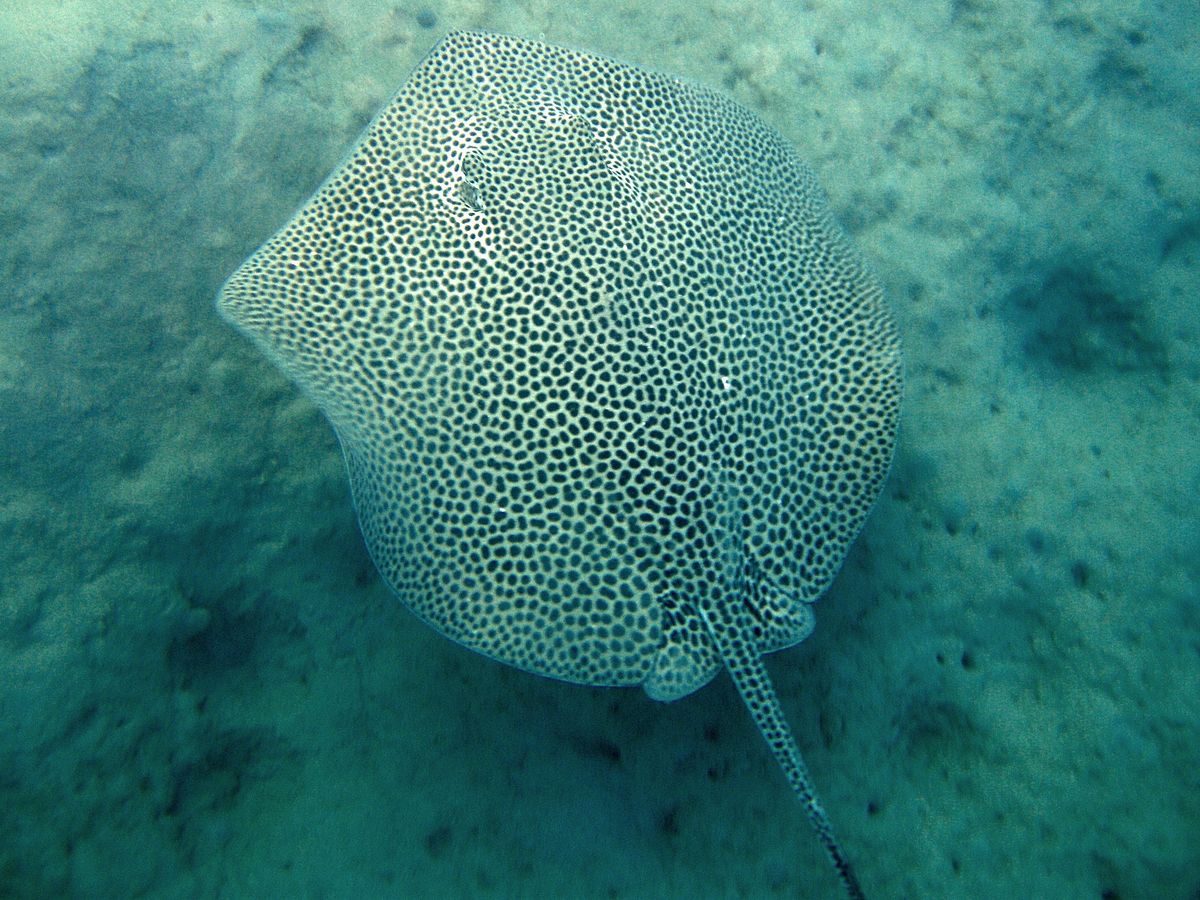Reticulate whipray
(Himantura uarnak)

Description
The reticulate whipray or honeycomb stingray (Himantura uarnak) is a species of stingray in the family Dasyatidae.It inhabits coastal and brackish waters across the Indo-Pacific region from South Africa to Taiwan to Australia,favoring sandy habitats.A large species reaching 2 m (6.6 ft) in width,the reticulate whipray has a diamond-shaped pectoral fin disc and an extremely long tail without fin folds.Both its common and scientific names refer to its ornate dorsal color pattern of many small,close-set dark spots or reticulations on a lighter background.However,the reticulate whipray is only one of several large spotted stingrays in the Indo-Pacific which,coupled with the variability of its coloration with age and locality,has resulted in a great deal of taxonomic confusion.The pectoral fin disc of the reticulate whipray is diamond-shaped and wider than long,with the leading margins almost straight and the snout and outer corners angular.In juveniles,the disc is about as wide as long,with a more obtuse snout and rounded corners.The eyes are small and immediately followed by the spiracles (paired respiratory openings).A short and wide curtain of skin with a minutely fringed rear margin is present between the long,thin nostrils.The mouth is relatively small,with a deep concavity at the center of the lower jaw and shallow furrows at the corners extending onto the lower jaw.A row of 4–5 papillae (nipple-like structures) is found across the floor of the mouth.There are 26–40 upper tooth rows and 27–44 lower tooth rows.The pelvic fins are small and triangular.The tail is whip-like and extremely thin,measuring 3–3.5 times as long as the disc when intact,and lacks fin folds.Usually one serrated stinging spine is located on the upper surface on the tail,some distance from the base.Adult rays have a wide band of flattened,heart-shaped dermal denticles that extend from between the eyes to the tail spine,increasing in density with age,along with two large pearl thorns at the center of the back.The tail behind the spine is covered by small thorns.The dorsal band of denticles is largely developed by the time the juveniles are 50 cm (20 in) across.The coloration of the reticulate whipray varies substantially with age and locality.Adults generally have a dorsal pattern of numerous closely spaced dark brown spots or reticulations on a beige to yellow-brown background,which becomes blackish past the spine with lighter bands on the sides.The underside is pale,without markings.Juveniles are yellowish above with tiny,densely packed dark spots,around seven spots in a line between the spiracles,and three rows of spots in front of the sting.This large species has been reported to reach a disc width of 2 m (6.6 ft),a total length of 6 m (20 ft),and a weight of 120 kg (260 lb).
Taxonomic tree:







